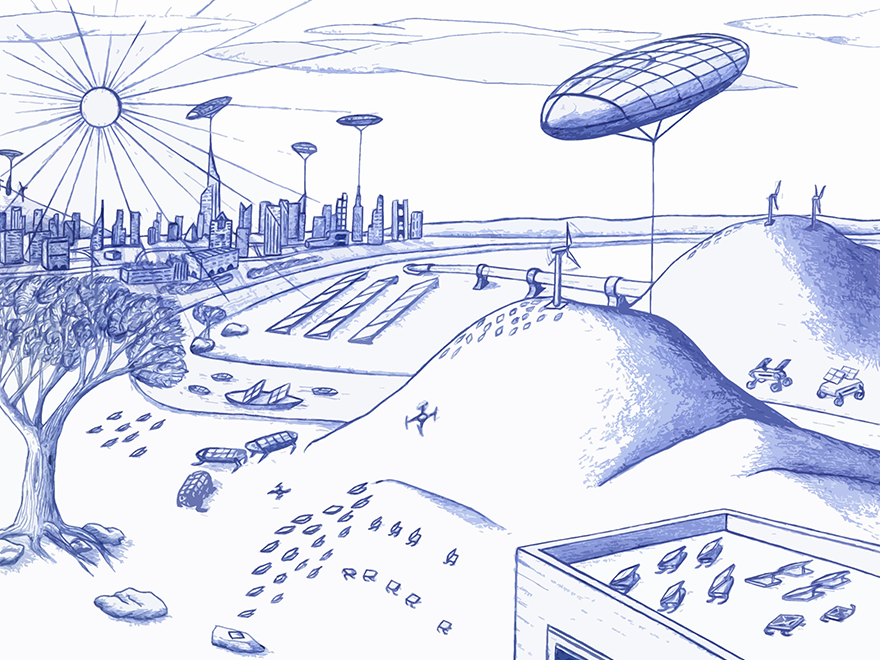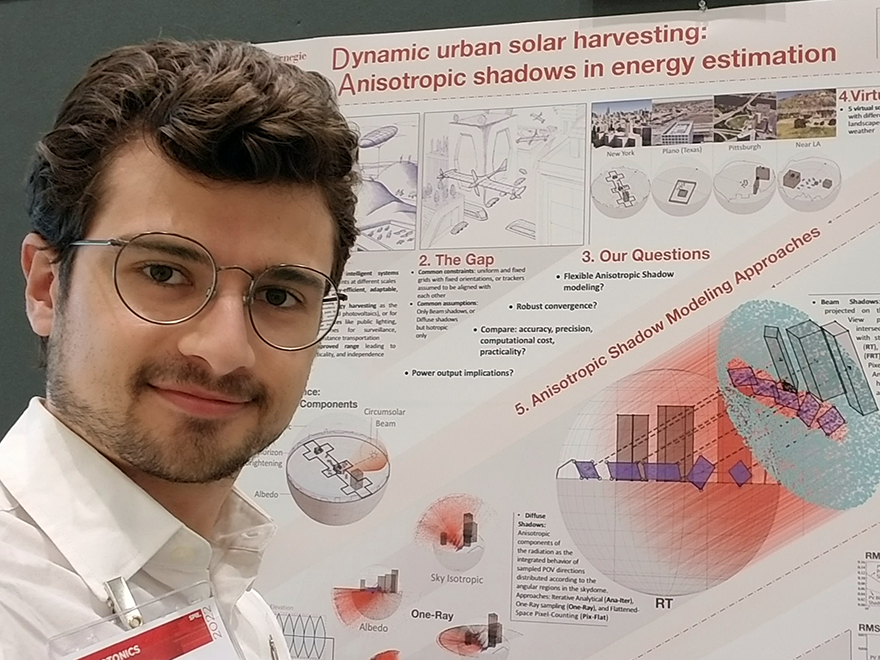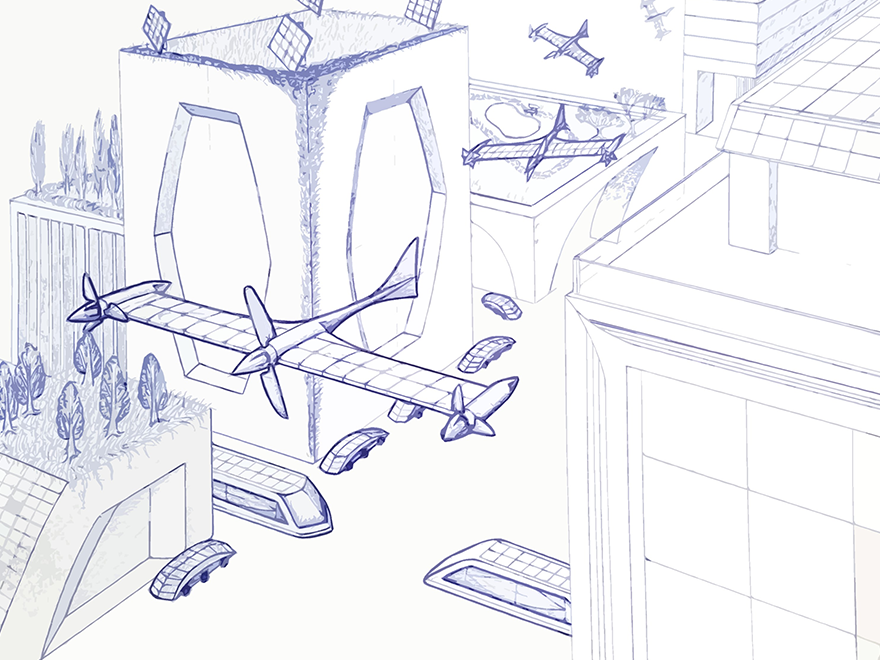Modeling light for solar panel placement in urban settings
Solar panel installation in cities requires setups tailored to the complex geometry of urban spaces that provide the most direct sunlight to each panel. Among the processes for designing the most efficient setup for solar panels is shadow modeling.
The cost of solar photovoltaic systems (more commonly, solar panels) has fallen drastically in the past decade. Through a combination of environmental consideration and economic feasibility, solar panels are being installed in more places and used in larger projects. The demand for solar panels in everyday use means they are being installed as parts of modern city construction.
Traditionally, solar panels are installed in large arrays in wide-open spaces where they can absorb as much sunlight as possible for as much of the day as possible. As cities grow and expand, they will require more power, and it will be useful to place solar panels near the populations that need power. Solar panels in urban environments also removes them from the open fields where they compete with farms for space.
Installation in cities requires solar panel setups tailored to the complex geometry of urban spaces that provide the most direct sunlight to each panel. Among the processes for designing the most efficient setup for solar panels is shadow modeling, which has the ability to create millions of scenarios to maximize energy collection from solar panels that would not be possible to test physically. This technology has the potential beyond solar panel placement, such as measuring light levels for urban farming and measuring heat levels for building design.
Urban shadow modeling is the process of simulating a cityscape in a 3D modeling engine and calculating the shadows cast by the sun. This allows engineers to find the areas with the least amount of shadows and tailor the placement and angle of each solar panel to allow them to catch the most sunlight. Research at Carnegie Mellon University, headed by Andrés Arias-Rosales and Philip LeDuc, a professor of mechanical engineering, has studied multiple approaches to beam modeling. Findings have been published in Renewable and Sustainable Energy Reviews.
The paper is one in a series of research working to combine the biological concept of swarm theory (how individual organisms such as ants can work as a swarm to produce behaviors that are far more complex than the individual parts) with the increasing demand and efficiency of solar panels by the general population. “There are some very exciting emerging markets in building-integrated photovoltaics and vehicle-integrated photovoltaics,” said Arias-Rosales, a Ph.D. student in mechanical engineering working with LeDuc, and the mind behind this project. Andrés also mentions potential applications for solar panels on roads or on large drones.
There are some very exciting emerging markets in building-integrated photovoltaics and vehicle-integrated photovoltaics.
Andrés Arias-Rosales, Ph.D. student, Mechanical Engineering
To realize this vision, Arias-Rosales began to build a new modeling framework that could efficiently track the shadows cast by the sun as it moves across the sky and as vehicles, people, and drones move around a densely-packed city. They studied four different methods of tracing the hard shadows cast by the sun in different settings from loosely packed urban environments like La Crescenta-Montrose, California to densely packed cities such as New York.
The four methods tested in the research were:
- Rasterization and pixel counting in a virtual photograph to measure the area hit by the sun; this is the most accurate but the most computationally intense method.
- Two types of ray tracing, which use vector analysis to determine the surface area hit. Forward ray tracing measures rays from the light source and calculates how many of them hit the solar panels. It is extremely computationally intensive, but as the most straightforward method, it was used as a baseline. Focused ray tracing measures rays from the solar panel and sees how many hit the sun; it is much faster than rasterization and still fairly accurate.
- A fully analytical approach, which used geometric modeling and linear algebra to calculate how much of the sun was blocked by buildings in between the solar panel and the sun.
This last method was the fastest by orders of magnitude but does not work as well in more complex environments or environments with a lot of things in motion.
Which method is best for measuring the cast shadows? “It depends in part on the exact application you’re dealing with,” said Arias-Rosales. The analytical approach was by far the fastest and most accurate approach. However, implementing this approach is extremely complex, and it requires prior and exact modeling of all the objects in the environment. The focused ray-tracing approach is a very good balance, as it is far more efficient than the rasterization approach and is only a little bit less accurate. The rasterization method is not very useful until the environment becomes very complex because, even though the method is very slow, unlike the other methods, the rasterization method does not slow down the more objects there are in the environment.
These new modeling techniques are not only applicable to solar panels. There is potential for this technology in many modern applications, like temperature modeling for environmentally-conscious design, such as designing buildings to not be as affected by direct sunlight and therefore cut costs on air conditioning or determining tree placement in public spaces to make them cooler or using solar panels to both capture the sunlight and generate shade. Another application is to use this shadow modeling to design public gardens as urban farming becomes more and more popular as people become more self-sufficient and environmentally conscious.



